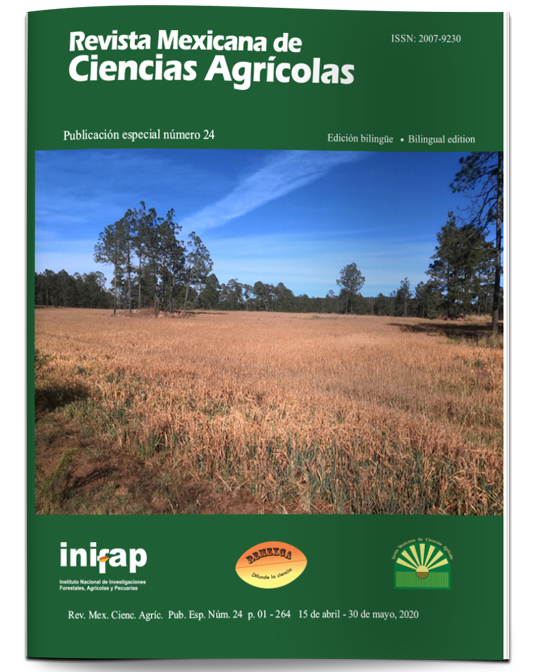Optimization of resources in forage production Irrigation District 028 Tulancingo
DOI:
https://doi.org/10.29312/remexca.v0i24.2366Keywords:
crop pattern, linear programming, net profitAbstract
The limitation of resources in forage production, necessary for the development of livestock production activity in irrigation district 028 Tulancingo, in the state of Hidalgo, motivated the development of a linear programming model (LPM) that optimizes them in quantity total required. In this model, with the Simplex method, the objective function was to maximize the total net economic benefit (BN) of the district; starting from the sum of the BN of each crop by its surface, thus generating a pattern that complies with the total restrictions to which the function is subject: availability of resources and requirements of each crop. Based on the generated LPM, four scenarios were tested: 1) current situation; 2) with coating of the conduction network; 3) with second cultures; and 4) with coating and second cultures. Each one with four variants of water availability: the one registered in the 2018-2017 agricultural cycle, those calculated for exceedance probability of 50, 75 and 95%. The combination of scenarios and variants resulted in a total of 16 cultivation patterns in which, as the volume offered is reduced, the maximum areas that the LPM suggest for each cultivation are also reduced. The actions proposed in scenarios 2, 3 and 4 in all cases increased the feasible area as well as the BN compared to the current situation, even though this presents a greater availability of water.
Downloads
Downloads
Published
How to Cite
Issue
Section
License
The authors who publish in Revista Mexicana de Ciencias Agrícolas accept the following conditions:
In accordance with copyright laws, Revista Mexicana de Ciencias Agrícolas recognizes and respects the authors’ moral right and ownership of property rights which will be transferred to the journal for dissemination in open access. Invariably, all the authors have to sign a letter of transfer of property rights and of originality of the article to Instituto Nacional de Investigaciones Forestales, Agrícolas y Pecuarias (INIFAP) [National Institute of Forestry, Agricultural and Livestock Research]. The author(s) must pay a fee for the reception of articles before proceeding to editorial review.
All the texts published by Revista Mexicana de Ciencias Agrícolas —with no exception— are distributed under a Creative Commons License Attribution-NonCommercial 4.0 International (CC BY-NC 4.0), which allows third parties to use the publication as long as the work’s authorship and its first publication in this journal are mentioned.
The author(s) can enter into independent and additional contractual agreements for the nonexclusive distribution of the version of the article published in Revista Mexicana de Ciencias Agrícolas (for example include it into an institutional repository or publish it in a book) as long as it is clearly and explicitly indicated that the work was published for the first time in Revista Mexicana de Ciencias Agrícolas.
For all the above, the authors shall send the Letter-transfer of Property Rights for the first publication duly filled in and signed by the author(s). This form must be sent as a PDF file to: revista_atm@yahoo.com.mx; cienciasagricola@inifap.gob.mx; remexca2017@gmail.
This work is licensed under a Creative Commons Attribution-Noncommercial 4.0 International license.



